Neuroimaging Techniques Transforming Mental Health
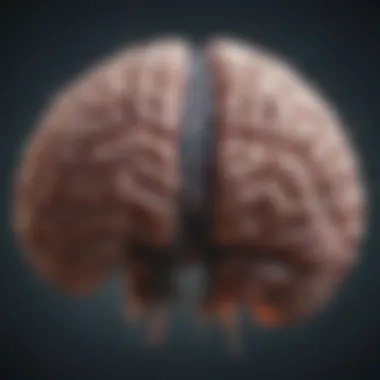
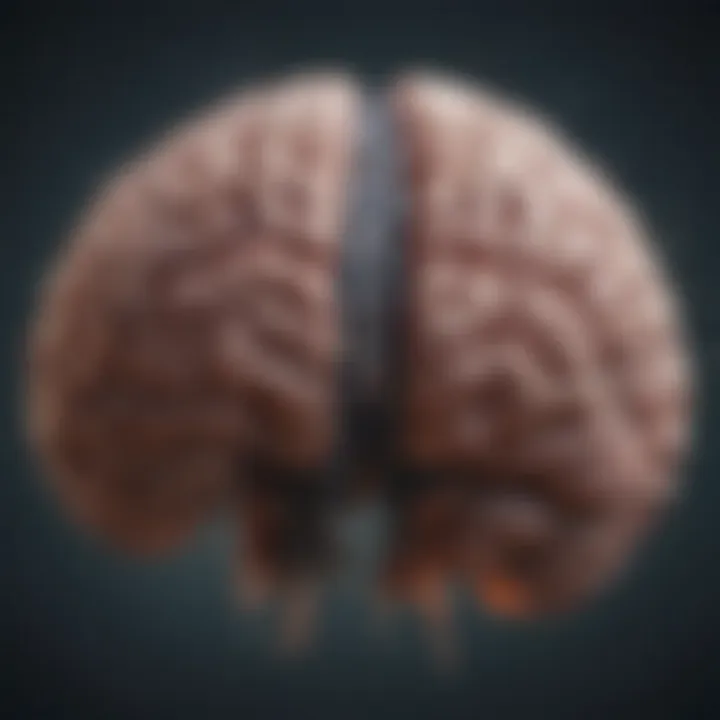
Intro
Neuroimaging has emerged as a critical tool in the study and management of mental illness. Its ability to visualize the brain's structure and function gives researchers and clinicians unprecedented insights into psychiatric conditions. This article comprehensively examines the various neuroimaging techniques available today, emphasizing their roles in understanding the complexities of mental disorders and personalized treatment strategies.
The significance of neuroimaging lies not only in research but also in practical, clinical applications. Techniques such as magnetic resonance imaging (MRI) and positron emission tomography (PET) allow for the identification of biological markers associated with mental illnesses. New advancements in these modalities also offer potential for innovative therapeutic approaches. With this exploration, we aim to connect the dots between neuroimaging technologies and their contributions to mental health care, fostering a better understanding of the brain's role in emotional and psychological well-being.
Prologue to Neuroimaging
Neuroimaging is a pivotal area of research and clinical practice that explores how brain activity relates to mental health and illness. This section will provide a deeper understanding of neuroimaging, covering its definition, historical context, and significance in mental health.
Defining Neuroimaging
Neuroimaging refers to various techniques used to visualize the structure, function, and activity of the brain. These methods allow researchers and clinicians to gain insights into how mental illnesses manifest within neural networks. Common neuroimaging modalities include Magnetic Resonance Imaging (MRI), Positron Emission Tomography (PET), and functional MRI (fMRI). Each of these techniques offers unique perspectives on brain anatomy and function, aiding in both diagnosis and treatment of mental disorders.
Historical Context
The evolution of neuroimaging has transformed significantly over the past few decades. Initially, techniques were mostly reliant on basic imaging methods, such as X-rays. The introduction of MRI in the 1980s marked a major turning point, providing unprecedented detail about brain structures. Over time, researchers began exploring functional imaging, which tracks metabolic activity in the brain, thus opening new avenues for understanding how various mental illnesses affect neural mechanisms. Each major advancement has built upon previous technologies, leading to an integrated understanding of the brain in health and disease.
Importance in Mental Health
Neuroimaging plays a crucial role in understanding mental health conditions. It provides tangible evidence of brain abnormalities associated with disorders like schizophrenia, depression, and anxiety. This aids clinicians in forming accurate diagnoses. Moreover, neuroimaging not only enhances the understanding of how these disorders manifest neurologically but also assists in tracking treatment responses. With imaging data, mental health professionals can personalize treatment plans, ultimately leading to better patient outcomes.
"Neuroimaging provides a roadmap that guides the understanding of mental illnesses, revealing insights that were previously obscured."
In summary, neuroimaging stands as a cornerstone of modern mental health research and treatment. Its methods not only define how we visualize the brain but also determine how we approach mental health care. Enhanced findings can potentially revolutionize how mental illnesses are treated in clinical settings.
Types of Neuroimaging Techniques
Neuroimaging techniques are essential tools in the exploration of mental illnesses. They enable researchers and clinicians to visualize and assess brain structure and function, influencing both diagnosis and treatment. Each type of neuroimaging technique provides unique insights, making them valuable for understanding complex mental health conditions. An in-depth look at these various types can enhance our appreciation of their applications and limitations.
Structural Imaging
Structural imaging techniques are crucial for obtaining detailed images of the brain's anatomy. They help identify various conditions by revealing structural abnormalities in brain tissues. Understanding structural imaging is fundamental in the field of neuroimaging for mental illness.
CT Scans
CT scans, or computed tomography scans, produce cross-sectional images of the brain. They are particularly adept at detecting hemorrhages, tumors, and other structural abnormalities. A key characteristic of CT scans is their speed. This technique can often provide critical information in emergency situations. The unique feature of CT scans lies in their use of X-rays, which allows for relatively quick imaging. However, the exposure to radiation is a significant disadvantage, limiting their use in chronic monitoring situations.
MRI Techniques
MRI, or magnetic resonance imaging techniques, offer high-resolution images of brain structures. This method excels at distinguishing between different types of soft tissues. The primary advantage of MRI is its non-invasive nature and the absence of ionizing radiation. MRI is a preferred choice for studying conditions, such as multiple sclerosis or degenerative diseases, due to its detailed views of brain structures. Nevertheless, the long scanning times can limit its application in emergency settings.
Diffusion Tensor Imaging
Diffusion tensor imaging (DTI) is an advanced form of MRI that maps the diffusion of water molecules in brain tissues. It provides insights into the brain's white matter integrity, which is essential for understanding various neurological disorders. The key characteristic of DTI is its capacity to visualize connections between brain regions. This technique is particularly beneficial for studying psychiatric disorders where white matter abnormalities are implicated. However, interpreting DTI results can be complex and requires careful consideration of various influencing factors.
Functional Imaging
Functional imaging techniques focus on the brain’s activity rather than its structure. They are pivotal in understanding how various regions of the brain interact during different tasks or in response to various stimuli. Their role in mental illness research is critical, as they provide insights into the functioning and metabolic processes of the brain.
fMRI
Functional MRI (fMRI) tracks blood flow changes in the brain, which correlate with neuronal activity. This technique allows researchers to observe brain function dynamically, making it advantageous for studying mental disorders. fMRI's real-time analysis capabilities are its key characteristic. It can reveal functional connectivity between different brain regions. However, fMRI can be limited by artifacts or participant motion during scans, affecting the reliability of the data.
PET Scans
Positron emission tomography (PET) scans provide information about brain metabolism and neurochemical functioning. They utilize radioactive tracers to visualize metabolic processes within the brain. The key characteristic of PET scans is their ability to measure aspects like glucose metabolism, which can be particularly insightful for understanding mental health conditions. The downside is the exposure to radioactive materials, which restricts their repeated use during studies.
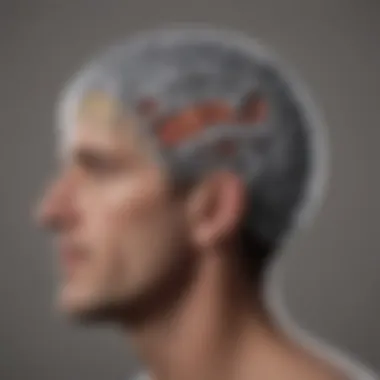
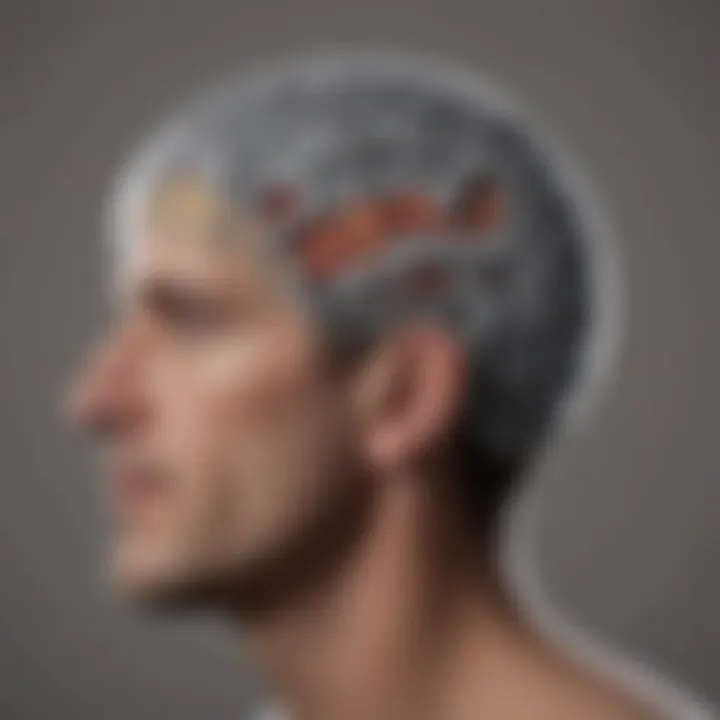
SPECT
Single-photon emission computed tomography (SPECT) is similar to PET but uses different radioactive tracers. It also provides insight into blood flow and activity in the brain. A significant advantage of SPECT is its relatively low cost compared to PET scans, making it more accessible in clinical practice. However, SPECT typically offers less resolution than PET, which can limit detailed assessments.
Emerging Techniques
The field of neuroimaging is rapidly evolving, with new technologies enhancing our understanding of brain functions related to mental health. Emerging techniques showcase innovative approaches, further expanding the capabilities of neuroimaging.
Magnetoencephalography
Magnetoencephalography (MEG) measures the magnetic fields produced by neuronal activity. This non-invasive technique offers excellent temporal resolution, making it unique in tracking brain activity over time. MEG's ability to provide real-time data on brain function makes it a valuable tool in research and clinical applications. However, the high equipment and operational costs can be a barrier to widespread use.
Optogenetics
Optogenetics combines genetic engineering and light to control neurons with high precision. This technique allows researchers to manipulate brain activity in live subjects, providing unparalleled insights into causative relationships between brain function and behavior. The primary advantage of optogenetics is its specificity in targeting neuronal circuits. One limitation is that it is mainly used in animal models, leaving questions about human applications.
Advanced EEG
Advanced EEG (electroencephalography) techniques enhance traditional EEG by utilizing high-density electrode arrays and sophisticated signal processing. They allow for better spatial resolution and more accurate mapping of brain waves. This improvement enhances the ability to study mental disorders. However, interpreting results requires expertise, as EEG can be influenced by various external factors.
By confirming the diverse neuroimaging techniques available, we can appreciate their contributions to understanding and treating mental illnesses. Each method has distinctive benefits and drawbacks, emphasizing the need for selecting appropriate techniques based on specific clinical or research objectives.
Applications of Neuroimaging in Mental Illness
The application of neuroimaging in mental illnesses is significant, bridging a gap between brain activity and psychological conditions. This section will delve into how neuroimaging techniques help clinicians and researchers in diagnosing disorders, enhancing understanding of underlying neural mechanisms, monitoring treatment effectiveness, and identifying potential biomarkers. Each of these elements plays a critical role in advancing mental health care.
Diagnosing Mental Disorders
Neuroimaging has transformed the way mental disorders are diagnosed. Traditionally, diagnosis relied heavily on subjective assessments and clinical interviews. With neuroimaging, more objective criteria are introduced. Techniques like MRI and CT scans provide insights into the structural and functional aspects of the brain, which can reveal abnormailties linked to disorders such as schizophrenia or major depressive disorder.
For instance, structural imaging can detect volumetric changes in areas like the hippocampus, which are associated with memory and mood regulation. Moreover, functional imaging techniques like fMRI allow for observing brain activity patterns during specific tasks. This can aid in pinpointing dysfunction in neural circuits that may contribute to a disorder.
Understanding Neural Correlates
Exploring neural correlates of mental illnesses is another critical aspect of neuroimaging. This field combines findings from neuroimaging with psychological theories. By using advanced imaging techniques, researchers can identify how brain regions communicate during cognitive activities and emotional responses.
Documentation shows disrupted connectivity in neural circuits is often observed in conditions such as anxiety and post-traumatic stress disorder (PTSD). Insights gained from understanding these correlations deepen our comprehension of mental illness mechanisms, potentially guiding interventions.
"Neuroimaging not only reveals what is happening in the brain but also propels research that can lead to more effective treatments."
Monitoring Treatment Efficacy
Neuroimaging also plays a vital role in evaluating treatment efficacy. For patients undergoing therapy, be it pharmacological or psychotherapeutic, imaging techniques help track changes in brain activity or structure that might occur in response to treatment. This can be particularly important in conditions like depression, where the response to medication can vary significantly.
By comparing pre- and post-treatment images, clinicians can glean insights into how treatment affects the brain. For example, increased activity in specific brain regions may correlate with symptom improvement, helping professionals adjust treatment strategies accordingly.
Identifying Biomarkers
One of the promising applications of neuroimaging is the identification of biomarkers for mental illness. A biomarker can be any indicator—be it a biological measure or brain activity pattern—that signals psychological states or responses to treatment. The possibility of identifying specific biomarkers via neuroimaging could revolutionize the diagnosis and treatment of mental disorders.
Researchers are actively investigating how unique imaging profiles can distinguish between different disorders, offering a more personalized approach to mental health care. This could lead to earlier diagnosis and tailored interventions that directly address the unique needs of individual patients.
In summary, the applications of neuroimaging in mental illness not only enhance diagnostic accuracy but also advance understanding of the underlying neural correlates, improve measurement of treatment efficacy, and pave the way for discovering biomarkers essential for personalized care. The continuous evolution of these techniques promises a significant impact on mental health treatment moving forward.
Case Studies and Findings
Case studies and findings in the field of neuroimaging are crucial. They provide insights into how specific mental disorders manifest in the brain. Analyzing these case studies allows researchers and clinicians to connect imaging results with clinical symptoms. This connection is essential for refining diagnoses and treatment approaches. Each case often highlights unique aspects of mental illnesses, offering a nuanced understanding that broadens the scope of research.
Furthermore, case studies can also validate the effectiveness of different neuroimaging techniques. By observing changes in brain activity or structure in response to treatment, researchers can monitor progress and tailor interventions more effectively.


Depression and Neuroimaging
Depression is one of the most researched mental disorders in neuroimaging. Studies have shown distinct abnormalities in brain areas like the prefrontal cortex and amygdala.
- Functional imaging methods such as fMRI often reveal disrupted connectivity within emotional regulation networks. This can lead to better targeted therapies based on patient-specific neurobiological profiles.
- Recent advancements have shown promise in identifying biomarkers through structural imaging. This allows clinicians to predict treatment responses based on brain structure.
"Understanding the neurobiology behind depression can fundamentally alter treatment paradigms and improve patient outcomes."
Anxiety Disorders Insights
Anxiety disorders also display specific neuroimaging characteristics. For instance, hyperactivity in the amygdala is frequently observed.
- Neuroimaging studies help identify the brain regions involved in fear responses. Understanding these patterns assists in developing exposure therapies.
- Techniques like PET scans have shed light on neurotransmitter system abnormalities, particularly serotonin and dopamine pathways. These insights are vital for pharmacological interventions.
Schizophrenia Research
Schizophrenia presents one of the most challenging areas for neuroimaging research. Structural imaging often reveals enlarged ventricles and reduced gray matter.
*Studies indicate alterations in the brain's connectivity, particularly within the default mode network. This understanding has suggested potential biomarkers for early diagnosis.
- Functional imaging, particularly fMRI, highlights how patients respond to stimuli differently than those without the disorder. Such findings lay the groundwork for personalized treatment strategies.
Bipolar Disorder Exploration
Bipolar disorder showcases fluctuations in brain activity correlated with manic and depressive episodes.
- Neuroimaging has established that changes occur in key areas like the prefrontal cortex and insula during both mood states.
- Identifying these patterns may enhance early intervention strategies. Tracking brain changes can lead to proactive rather than reactive treatment measures.
Ethical Considerations in Neuroimaging
The use of neuroimaging techniques in mental health research and clinical practice involves significant ethical considerations. As these advancements offer profound insights into the brain and mental processes, they also raise questions about rights, consent, and the interpretation of sensitive data. Addressing these considerations is key to ensuring that neuroimaging contributes positively to mental health care while protecting individuals' rights.
Informed Consent
Informed consent is paramount in neuroimaging studies. Participants should fully understand the nature of the study, the procedures involved, and potential risks. This understanding allows individuals to make informed decisions about their participation. There is also a need to explain how their neurological data will be used, stored, and shared. Researchers must be clear about the goals of the study and how it will contribute to understanding or treating mental illness.
Moreover, researchers should assess a participant's ability to provide consent, especially when involving vulnerable populations such as children or individuals with severe mental disorders. It's essential to have safeguards in place to ensure that consent is obtained ethically and that participants are treated with respect throughout the process.
Privacy Concerns
Neuroimaging generates highly sensitive data regarding brain structure and function. Protecting this information is crucial. The possibility of data breaches or misuse emphasizes the need for robust privacy measures. Data anonymization is often implemented to minimize the risk of identifying participants through their neuroimaging data.
Furthermore, ethical protocols should specify how long the data will be retained and under what circumstances it could be shared with third parties. Maintaining participants' confidence in the confidentiality of their information is vital for the continuation of neuroimaging research in mental health.
Bias and Interpretation
The interpretation of neuroimaging data is subject to biases that can influence research conclusions. This can occur through various means, including selective reporting or overinterpreting results. Awareness of these biases is crucial for researchers.
Training researchers and healthcare professionals in understanding potential biases can mitigate this risk. Implementing peer review processes and ensuring transparency in methods can foster better interpretation of neuroimaging data. Ensuring that findings are contextualized within broader research is essential to avoid misrepresentation of the relationship between neuroimaging results and mental health conditions.
Ethical considerations shape the foundation of trust in neuroimaging research.
By addressing informed consent, privacy concerns, and biases in data interpretation, the field can progress responsibly. Ultimately, maintaining ethical standards will enhance not only the integrity of neuroimaging studies but also their contributions to understanding mental illnesses.
Challenges and Limitations of Neuroimaging
Neuroimaging is a powerful tool used to explore the brain's structure and function in relation to mental illnesses. However, several challenges and limitations exist within this field that can hinder its effectiveness. Understanding these issues is crucial for researchers, clinicians, and anyone interested in the applications of neuroimaging in mental health. This section will outline the key challenges, focusing on technical limitations, interpretational difficulties, and access to technology.
Technical Limitations
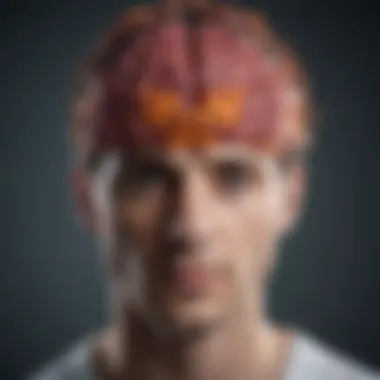
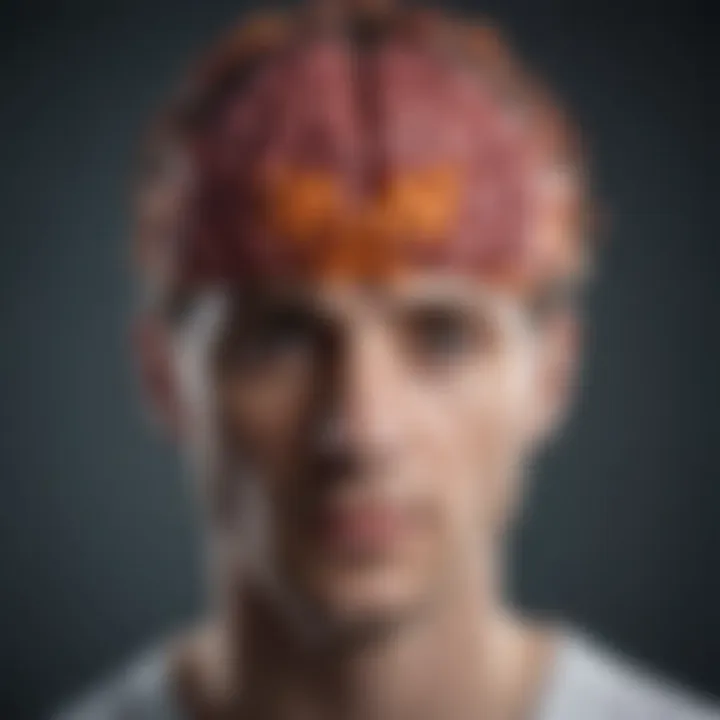
Neuroimaging technologies, while advanced, have inherent technical limitations that can impact the accuracy of results. For example, magnetic resonance imaging (MRI) provides high-resolution images of brain anatomy but can be sensitive to subject movement. Even slight shifts during scans can result in blurry images, complicating data interpretation. Similarly, positron emission tomography (PET) relies on radioactive tracers, which may limit the frequency of scans and the populations that can safely participate.
In addition, spatial and temporal resolution can vary among neuroimaging modalities. Functional imaging methods such as functional MRI (fMRI) offer some of the most precise data on brain activity, yet this precision is still not perfect. There is a constant effort to improve these techniques, yet the current limitations must be considered when interpreting the findings.
Interpretational Challenges
Interpreting neuroimaging data poses its own set of challenges. Results can be complex, and correlational data does not imply causation. For instance, a study might find an increase in brain activity in specific regions during a task associated with a mental illness. However, it is unclear whether this increase is a cause of the illness, a result of it, or merely an associated factor. The nuances of brain functions and interactions defy easy categorization.
In some cases, results can be misleading due to the lack of standardized methodologies. Variations in how studies are conducted, from selection criteria to imaging protocols, can lead to inconsistent findings. Furthermore, there remains a significant challenge in translating neuroimaging findings into clinically useful information. Thus, the integration of neuroimaging insights into treatment remains complicated and requires caution.
Access to Technology
Access to neuroimaging technology is uneven and remains a significant barrier to research and clinical implementation. High-quality neuroimaging facilities are costly to operate and may not be available in all regions. This discrepancy often results in a lack of diversity in research samples, creating biases in the understanding of mental illnesses. Access is especially limited in low-income communities, where mental health services are already in short supply. The inadequacy of technology access can hinder the advancement of research and the benefits it can bestow upon various populations.
In summary, while neuroimaging offers groundbreaking insights into mental health, it is not without its challenges. Technical limitations can affect data quality; interpretational difficulties complicate the understanding of results, and uneven access to technology limits the ability to leverage these tools fully. Recognizing and addressing these challenges is necessary for maximizing the potential of neuroimaging in the realm of mental health research and treatment.
Future Directions in Neuroimaging
Exploring future directions in neuroimaging is crucial for understanding how these technologies can evolve and enhance mental health treatment. This section will focus on advancements that promise to reshape the landscape of psychiatric care. Embracing new techniques will allow researchers and clinicians to glean deeper insights into the brain's complex workings, ultimately leading to improved therapy and diagnostics.
Technological Advancements
Technological improvements in neuroimaging are continuous and significant. New devices with higher resolution and faster processing capabilities are emerging. For instance, advancements in functional MRI (fMRI) provide better spatial and temporal resolution than predecessors. This enhancement allows for a more precise examination of brain activities in real time, making it easier to see how mental tasks can affect specific brain regions.
Moreover, hybrid imaging technologies, such as PET-MRI, combine the strengths of both methods for more comprehensive evaluations. These tools can offer a detailed look at both brain structure and function simultaneously, making them invaluable in studying the biological underpinnings of mental illnesses. As technology progresses, we may also see more portable imaging devices that can be used in various settings, expanding accessibility.
Integration with Genetics
Integrating neuroimaging with genetics is an emerging area of research that can provide deeper insights into the biological basis of mental disorders. Understanding how genetic factors influence brain structure and function may help clarify why certain individuals are more prone to specific conditions.
By linking neuroimaging data with genetic profiles, researchers can identify potential biomarkers that indicate vulnerability to diseases like schizophrenia or major depressive disorder. This integration may provide a pathway to understand the heritability of these conditions. Using neuroimaging in conjunction with genetic information can facilitate the early identification of mental health issues, leading to more timely and targeted interventions.
Personalized Treatment Approaches
Personalized medicine is the future of mental health care, relying heavily on neuroimaging advancements. By assessing individual brain patterns and structures, clinicians can tailor treatments to each patient’s unique needs. This method contrasts with the traditional one-size-fits-all approach.
For example, neuroimaging can aid in selecting the appropriate medication by observing which brain circuits activate in response to specific drugs. A patient with bipolar disorder might respond differently to a medication than someone with anxiety disorders, and neuroimaging can guide these decisions. Additionally, applying machine learning algorithms to neuroimaging data may reveal unique patterns associated with treatment outcomes, supporting more effective interventions over time.
Future directions in neuroimaging will not only enhance our understanding of mental health but also create new paradigms in treatment efficacy and patient care.
Culmination
Neuroimaging plays a crucial role in the understanding and treatment of mental illnesses. This article has provided an in-depth analysis of the various techniques and their implications in clinical settings. The findings illustrate that these imaging modalities do not only assist in diagnosis but significantly enhance treatment personalization. Neuroimaging allows clinicians to identify specific brain patterns associated with mental disorders. This knowledge is vital for tailoring interventions to individual patient needs, which ultimately leads to better outcomes.
In summary, neuroimaging offers a window into the complexities of the brain, facilitating a deeper understanding of mental health conditions. The ability to visualize brain activity and structure provides insights that were previously unattainable. It helps to unravel the underlying neurobiological factors that contribute to mental illnesses. As mental health professionals embrace these technologies, the landscape of psychiatric care continues to evolve, creating opportunities for more precise and effective treatments.
Additionally, the ethical considerations discussed emphasize the need for responsible use of neuroimaging data. With advancements come challenges, and ensuring patient privacy and informed consent is paramount. Addressing these issues is essential for fostering trust between patients and practitioners.
In summary, the integration of neuroimaging into mental health care signifies a transformative leap forward. This article highlights its various applications, advancements, and the ongoing discourse surrounding ethical issues, underscoring the significance of modern imaging in shaping future mental health practices.
Summary of Findings
The exploration of neuroimaging in this article revealed several key insights. First, there is a diverse array of imaging techniques available, each providing unique perspectives on brain function and structure. Techniques like fMRI and PET scans have become instrumental in understanding mental disorders such as depression, anxiety, and schizophrenia.
Moreover, the findings show that neuroimaging is not merely a diagnostic tool; it is pivotal in monitoring treatment efficacy and in the pursuit of identifying biological markers for mental illness. These biomarkers hold the potential to revolutionize treatment approaches, enabling healthcare providers to adapt therapies based on individual neurobiological profiles.
Additionally, ethical considerations are essential. The methods of acquiring and interpreting imaging data must continuously align with patient rights and privacy. This balance is crucial to maintaining professional integrity in practice.
Implications for Future Research
The implications for future research are extensive. Continued development in neuroimaging technology will enhance our understanding of mental illnesses. For instance, integrating advanced imaging techniques with genomic data could lead to breakthroughs in personalized medicine.
Researchers should focus on refining existing methodologies and exploring new applications of neuroimaging. Collaborations between neuroscientists, psychologists, and psychiatrists will foster interdisciplinary approaches, cultivating a comprehensive understanding of mental health phenomenology.
Moreover, as the field evolves, addressing ethical concerns related to neuroimaging will be paramount. Future studies should emphasize the importance of ethical frameworks that guide research and clinical practices in this domain.







